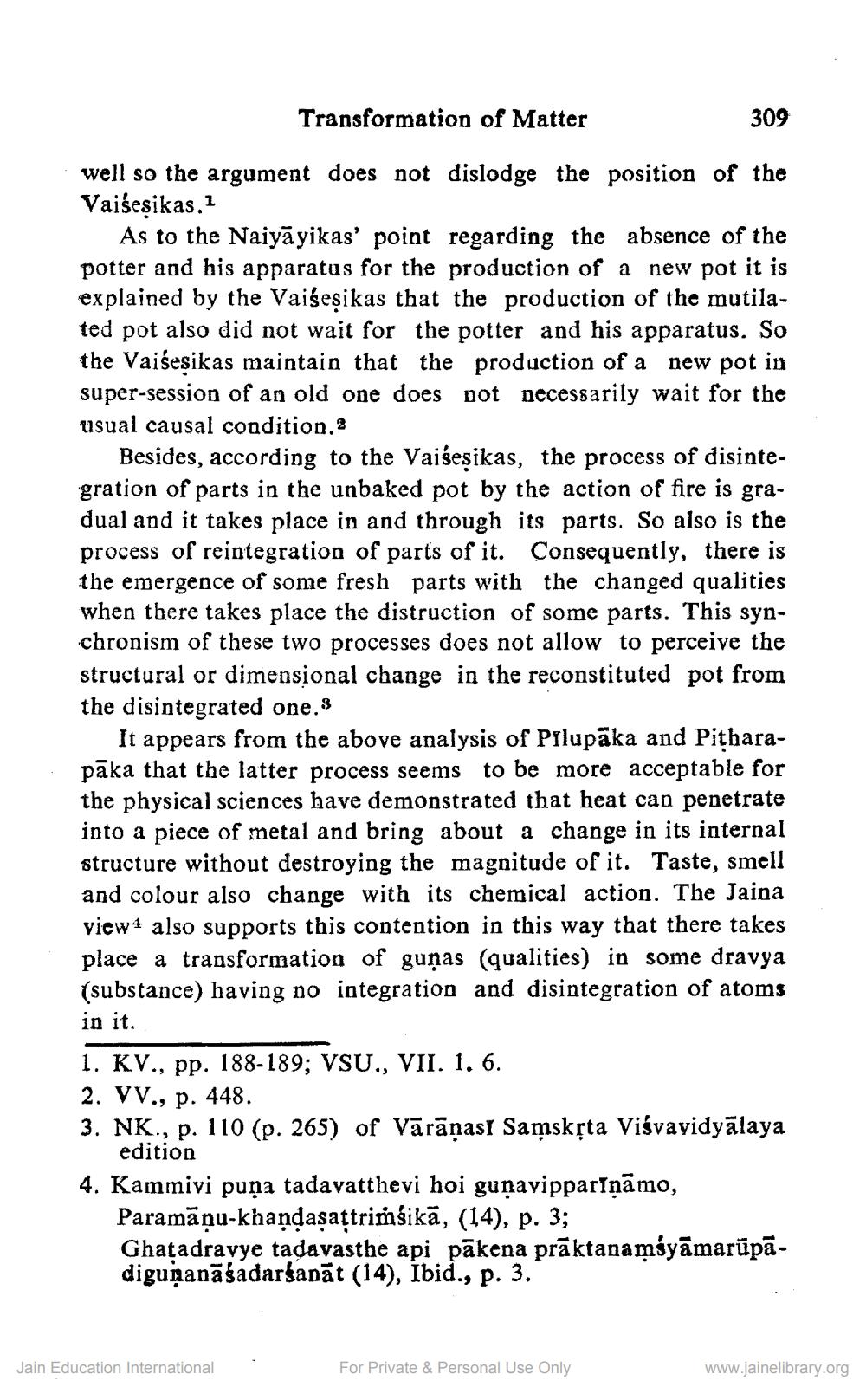________________
Transformation of Matter
309
well so the argument does not dislodge the position of the Vaišeşikas. 1
As to the Naiyāyikas' point regarding the absence of the potter and his apparatus for the production of a new pot it is explained by the Vaišeşikas that the production of the mutilated pot also did not wait for the potter and his apparatus. So the Vaiśeşikas maintain that the production of a new pot in super-session of an old one does not necessarily wait for the usual causal condition.
Besides, according to the Vaiseșikas, the process of disintegration of parts in the unbaked pot by the action of fire is gradual and it takes place in and through its parts. So also is the process of reintegration of parts of it. Consequently, there is the emergence of some fresh parts with the changed qualities when there takes place the distruction of some parts. This synchronism of these two processes does not allow to perceive the structural or dimensional change in the reconstituted pot from the disintegrated one.s
It appears from the above analysis of Pilupāka and Pitharapāka that the latter process seems to be more acceptable for the physical sciences have demonstrated that heat can penetrate into a piece of metal and bring about a change in its internal structure without destroying the magnitude of it. Taste, smell and colour also change with its chemical action. The Jaina view+ also supports this contention in this way that there takes place a transformation of guņas (qualities) in some dravya (substance) having no integration and disintegration of atoms in it. 1. KV., pp. 188-189; VSU., VII. 1. 6. 2. VV., p. 448. 3. NK., p. 110 (p. 265) of Vārāṇası Samsksta Viśvavidyālaya
edition 4. Kammivi puņa tadavatthevi hoi gunavippariņāmo,
Paramāņu-khandaşaţtrimśikā, (14), p. 3; Ghaçadravye tadavasthe api pākena prāktanamśyāmarūpādigunanāśadarsadāt (14), Ibid., p. 3.
Jain Education International
For Private & Personal Use Only
www.jainelibrary.org




